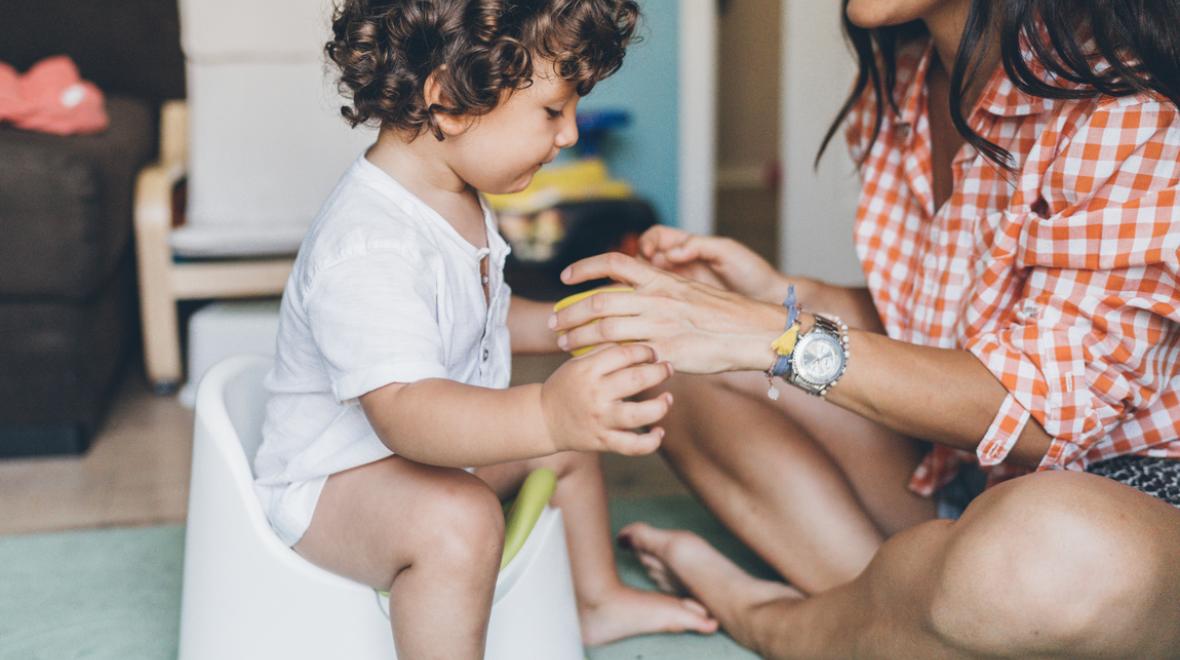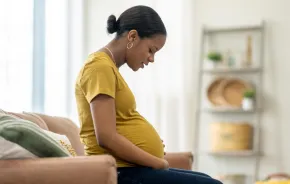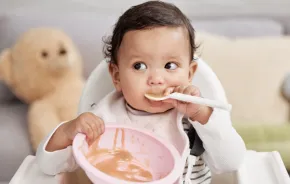
Editor's note: This article was sponsored by Diaper Stork
A typical baby will go through nearly 6,000 diapers before they’re potty trained. There’s no doubt that disposable diapers are convenient, which is why 90–95 percent of caregivers prefer them. But one-time-use diapers are a terrifying environmental concern, comprising 4 percent of solid waste in landfills; in King County, that number is actually 5 percent, representing 46,000 tons of waste (equivalent to the weight of 9,000 elephants!).
ParentMap spoke with Carrie Pollak, owner of Seattle cloth diapering service Diaper Stork, to learn more about how parents can reduce the environmental impact of their diapering journey. “As the owner of a cloth diaper business, I am aware that many families will never choose cloth as an alternative to disposables, so using fewer diapers is the next viable option to make a dent in our diaper waste,” says Pollak.
Practice elimination communication
Parents need to know that they have options other than diapering 100 percent of the time, says Pollak. For example, one way to use fewer diapers (and get your child out of diapers sooner overall) is elimination communication (EC), or natural infant hygiene. EC means paying attention to your baby’s cues so you’re able to pick up on when they need to eliminate and bring them to the toilet. A normative cultural practice worldwide, EC is far from mainstream in the United States, and the Diaper Stork team is on a mission to make the approach less intimidating for parents. “It doesn’t have to be all or nothing,” says Pollak.
Pollak was introduced to the practice of Elimination Communication when she was pregnant with her first child. “An acquaintance mentioned it to me. The first time I tried it, my daughter was 1 month old, and she pooped over the potty. I was hooked. By the time she could sit up, I was only changing a poopy diaper once per week.”
When Pollak’s second child, a son, was a newborn, she began making sound associations with his eliminations, saying “Pfft” whenever she knew he was passing waste. Starting when he was about four weeks old, Pollak would hold him over the toilet while making that same noise. He caught on. Now he is 9 months old, and Pollak says he poops on the potty most of the time and urinates in the potty two to three times each day.
Pollak’s experience made her want to build greater community awareness that babies and toddlers are far more capable than our society has taught us to believe.
“Babies are born to want to eliminate away from themselves. We train them otherwise by putting them in diapers to pee or poop,” says Pollak, adding that EC is another way that parents can bond with their babies. “It’s obvious when they’re telling you they’re hungry, and you can tell by their cry if they’re tired. EC is just another type of communication that brings you closer.”
EC may sound hard, but Pollak says it’s easier than you might think — it’s just a matter of paying attention to your baby’s natural cues. “It doesn’t have to be a niche thing — everyone should be aware of it. When their baby is of sitting-up age, around four months, [parents] can consider sitting their child on the potty.”
EC paves the way to earlier potty-training success
In 2020, Diaper Stork presented its customers with an Elimination Communication Challenge. Six participating families rose to the task of catching their baby’s waste anywhere except in a diaper for the first year of their child’s life. The results? Some kiddos took to EC right away — even starting shortly after birth. For about half of the families, it took about three months before parents were successful and confident at getting their babies to eliminate when not in a diaper.
A separate Diaper Stork survey of 126 Seattle families found that 60 percent of those who employed any EC at all stopped using daytime diapers by their child’s second birthday; 90 percent had successfully completed daytime potty training by their child’s third birthday.
Even if you make waves with EC, you’ll still need to go through the potty-training process with your little one, says Pollak. But getting a kid out of diapers is far easier after they have had some exposure to EC because they’re already used to using the potty, even if it is just once a day or on weekends. “They know what eliminating is. They’ve experienced it. It’s not this totally new thing, like when your baby only knows diapers until they’re 2 or more years old.” (EC- curious parents of newborns can learn more about starting the process by viewing Diaper Stork’s virtual potting training class for infants.)
It can be truly daunting to potty-train an older toddler, and that is why parents tend to put it off longer than necessary. “It takes time that is hard to carve out for busy parents,” says Pollak. “But catch your little ones at the developmentally appropriate time, and they will learn quickly and successfully. You’ll also have fewer temper tantrums to deal with.”
What’s more, hemming and hawing parents should consider the quantifiable environmental and financial impacts of delaying potty training: For every six months we put it off, we use 600 more diapers, which translates into 335 gallons of trash and up to $500 in diapering costs.
It’s important to note that EC and potty training are independent endeavors, so don’t be discouraged if you haven’t been practicing EC when you start potty training, says Pollak. “A child who has not [used the toilet before] can be capable of potty training around 18 months of age.”
The Diaper Stork team recommends the proven six-step “Oh Crap!” method of potty training by Jamie Glowacki that has worked for tens of thousands of parents. The company provides a virtual toddler potty training class based on this method that helps nudge parents to stick with the process and stay consistent.
Cloth or compostable?
Some families choose compostable diapers because they believe them to be an eco-friendly option, but Pollak says they are not yet a great solution for most U.S. families, including Washington state families. Most of these diapers are not completely compostable — they include some plastic that needs to be removed in order for the remainder of the product to be composted.
The state of Washington lacks a facility to collect and compost diapers, which means that in many cases compostable diapers purchased and used in Washington must be shipped across the country for processing. Because this practice doesn’t win high marks for sustainability, Diaper Stork is committed to pushing for a composting solution here in Washington and has applied for a grant from the King County Solid Waste Division to support this initiative.
In the meantime, Diaper Stork is helping families reduce their carbon footprint by offering reusable cloth diaper services. It offers two options, a weekly pickup and delivery service where the diaper washing is done for you; or an option to rent cloth diapers to wash yourself at home. “We also provide instruction and sell cloth diapering products for families that choose to save money and wash cloth diapers at home,” says Pollak.
Could babies pooping in the potty from six months of age become the new normal? The diapering crew at Diaper Stork would say that where there is a will, there are definitely ways families can drastically reduce their environmental impact, change far fewer diapers in the long run and increase connection with their baby.
|
Sponsored by: |

Learn more about Diaper Stork’s services, products, free classes and vision to achieve a local, sustainable and equitable diaper composting program in our state. |











